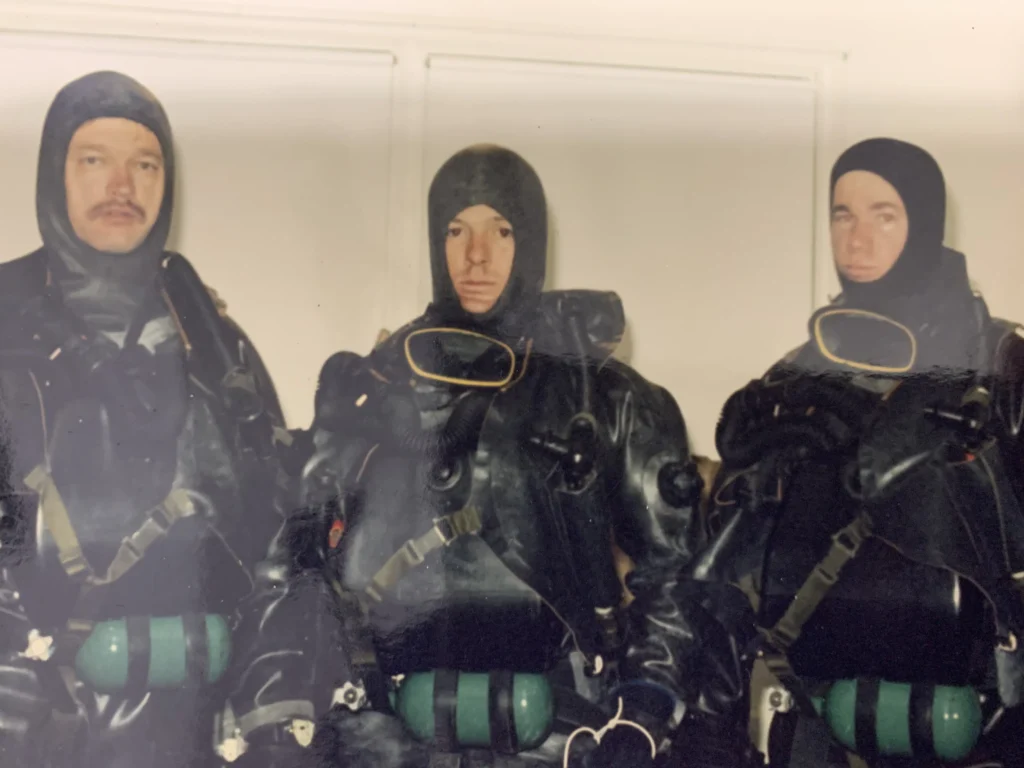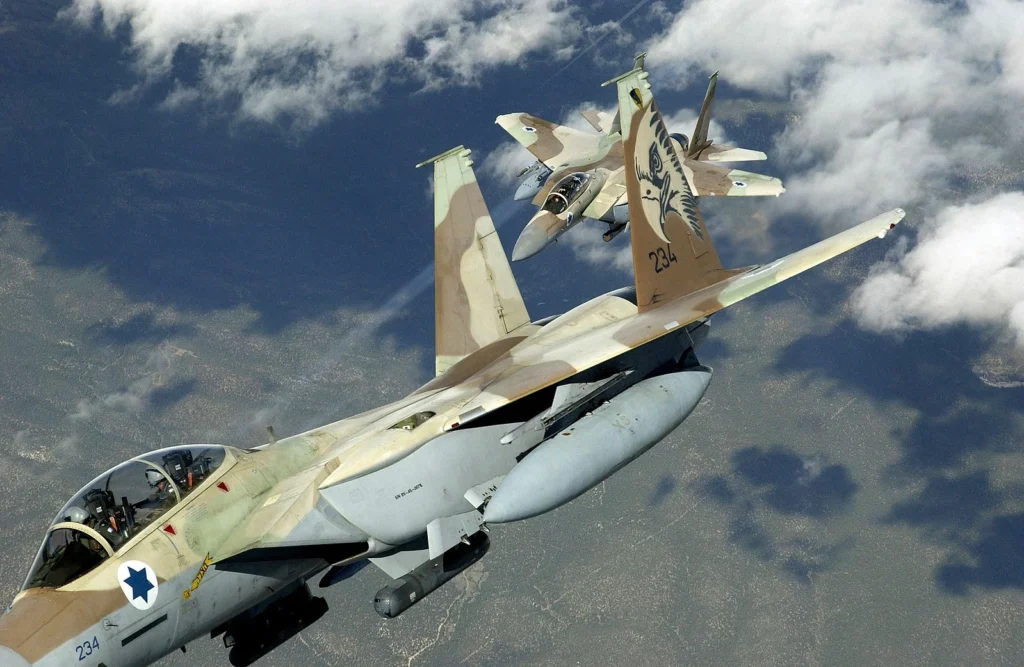These are the jets Iran would use in a fight with the US
- By We Are the Mighty
Share This Article

After forty years of sanctions and arms embargoes, Iran’s air force has slowly become an eclectic mishmash of aging platforms sourced through various channels. If war were to break out between Iran and the United States today, U.S. pilots would find themselves squaring off with Iranian pilots in a swarm of old American, Soviet, and Chinese jets. Some of these planes, like the Northrop F-5 Tiger II, have seen update efforts over the years. Others, however, are thought to be barely sky-worthy.
While there’s little doubt that advanced American fighters like the F-35 Joint Strike Fighter or the F-22 Raptor would have a long list of advantages over Iran’s ragtag fighters, that isn’t to say that the Islamic Republic of Iran Air Force lacks any teeth whatsoever. In fact, some of Iran’s jets actually boast capabilities that would put even America’s fifth-generation fighters to shame.
Of course, combat isn’t about who can put the best numbers on paper, and even Iran’s best jets likely wouldn’t even see the American fighter that put them down until long after they pulled their ejection seat levers, but America’s pilots should remain cautious: Some of Iran’s jets were actually the best America had to offer at one point. While Iran has more than a dozen combat-aircraft in service (in varying numbers), these are some of the first aircraft American pilots might run across in a war with Iran.
Iran’s ‘Top Gun:’ The Grumman F-14 Tomcat

Related: F-14 Tomcat: Iran’s best fighter jet used to be America’s Top Gun
Prior to Iran’s 1979 Islamic Revolution, the United States was working hand in hand with the nation’s monarch, even agreeing to sell them 80 of the U.S. Navy’s top tier intercept fighters, the F-14 Tomcat. A total of 79 of these jets were delivered. With a top speed of Mach 2.34 and a combat radius of 500 miles, these air superiority fighters are faster and carry more weapons than America’s fifth-generation fighters like the F-35.
Iran claims to have upgraded two F-14s to F-14AMs since then and says 24 of the fighters are mission capable, though that seems unlikely. The U.S. has gone to great lengths to stop Iran from getting F-14 parts (even shredding our own retired platforms), which means Iran has had to cannibalize parts off some jets to keep others in the air. Even if their F-14s are operational, their pilots almost certainly have limited flight time with them–meaning this “Top Gun” dogfight likely wouldn’t be as dramatic as the movies.
Russian Steel: The Mig-29

Rounding out Iran’s air intercept fighter numbers are as many as 30 operational Mikoyan Mig-29 Fulcrums. These fighters were sourced in small numbers through Russia and as a result of Iraqi pilots fleeing destruction from American forces during 1991’s Operation Desert Storm.
With a top speed of Mach 2.25, these fighters are also faster than America’s stealth platforms, though, like the F-14, the Mig-29 would lose a drag race to America’s F-15. With seven hardpoints for air-to-air missiles, these Migs were purpose built to stand and fight with America’s fourth-generation fighters (like the aforementioned F-15 and the F-16 Fighting Falcon). Iran has reportedly updated these platforms to support Nasr-1 anti-ship missiles as well, making them a concern for the U.S. Navy in waterways like the Strait of Hormuz.
Iran’s “home-built” fighter: The Northrop F-5 Tiger II

Related: MiG-28: ‘Top Gun’s’ fictional Cold War killer
In August of this year, Iran’s president Hassan Rouhani sat in the cockpit of what he described as the nation’s new “home-built” fourth generation fighter… the thing is, the fighter was neither new nor home-built. Rouhani was posing with a Northrop F-5F — a platform Iran had purchased from the United States more than forty years ago. It is presumed, however, that these jets have received a good deal of updating over the years, much of which was concocted internally. Iran’s truly home-built HESA Saeqeh is based on reverse engineered F-5s as well, despite first taking to the skies in 2007.
Unbeknownst to many, the Northrop F-5 also appeared in 1986’s “Top Gun,” as both the menacing (and fictional) Mig-28 and as an aggressor aircraft utilized by instructors at the Top Gun school. It’s believed that Iran maintains a fleet of 60 operational F-5s in varying trims (mostly F-5Es fighter bombers along with around 16 F-5F dual seat training fighters), making it one of Iran’s workhorse platforms. With a maximum speed of Mach 1.6, seven total hardpoints for missiles or bombs, and a great deal of maneuverability, these long-dated platforms are still capable of causing a good amount of trouble.
Iraqi leftovers: The Su-22 Fitter

As American F-15s headed in Iraqi airspace to kick off the Persian Gulf War in 1991, more than 40 Iraqi Su-22 fighter bombers frantically took to the sky. They weren’t looking to engage the inbound Eagles, however… they were running for their lives. American fighters brought down two, but the rest managed to make it into Iranian airspace. Some crash landed, some came down gently, but few were considered operable once they reached the tarmac.
It didn’t take long for Iran to claim these (and nearly a hundred other Iraqi aircraft) as their own, but making their newfound Su-22 fighter bombers sky-worthy again proved a lengthy (and costly) undertaking. Nearly 30 years after the already-dated jets arrived in Iran, it’s believed that something like 20 of these jets are operational today. Ten have even seen significant upgrades that allow them to carry precision-guided munitions and share data with nearby drones. These Fitters would pose little threat to American fighters, but would likely be relied on to engage ground forces instead, alongside their small number of Su-25 Grachs.
Read more from Sandboxx News:
- Here’s why last night’s Iranian missile strike didn’t start a war
- Iran hilariously bungles fake US aircraft carrier attack
- What exactly is Iran’s shadowy Quds Force?
- Iran and Russia poised to fill America’s void in Afghanistan
- The 18 greatest fighter aircraft of all time
This article by Alex Hollings was originally published by We Are the Mighty. Follow WATM on Facebook.
Feature image: U.S. Navy
Related Posts
Sandboxx News Merch
-

‘AirPower’ Classic Hoodie
$46.00 – $48.00 Select options This product has multiple variants. The options may be chosen on the product page -

‘Kinetic Diplomacy’ Bumper Sticker (Black)
$8.00 Add to cart -

‘Sandboxx News’ Trucker Cap
$27.00 Select options This product has multiple variants. The options may be chosen on the product page
We Are the Mighty
Related to: Airpower

The gravity of the situation: How to fly a fighter upside down

Airborne adventures with a Green Beret Combat Dive Team

Legendary US Army Ranger William ‘Doc’ Donovan achieves very rare special operations honor

Sandboxx News
-

‘Sandboxx News’ Trucker Cap
$27.00 Select options This product has multiple variants. The options may be chosen on the product page -

‘AirPower’ Classic Hoodie
$46.00 – $48.00 Select options This product has multiple variants. The options may be chosen on the product page -

‘AirPower’ Golf Rope Hat
$31.00 Select options This product has multiple variants. The options may be chosen on the product page -

‘Sandboxx News’ Dad Hat
$27.00 Select options This product has multiple variants. The options may be chosen on the product page
